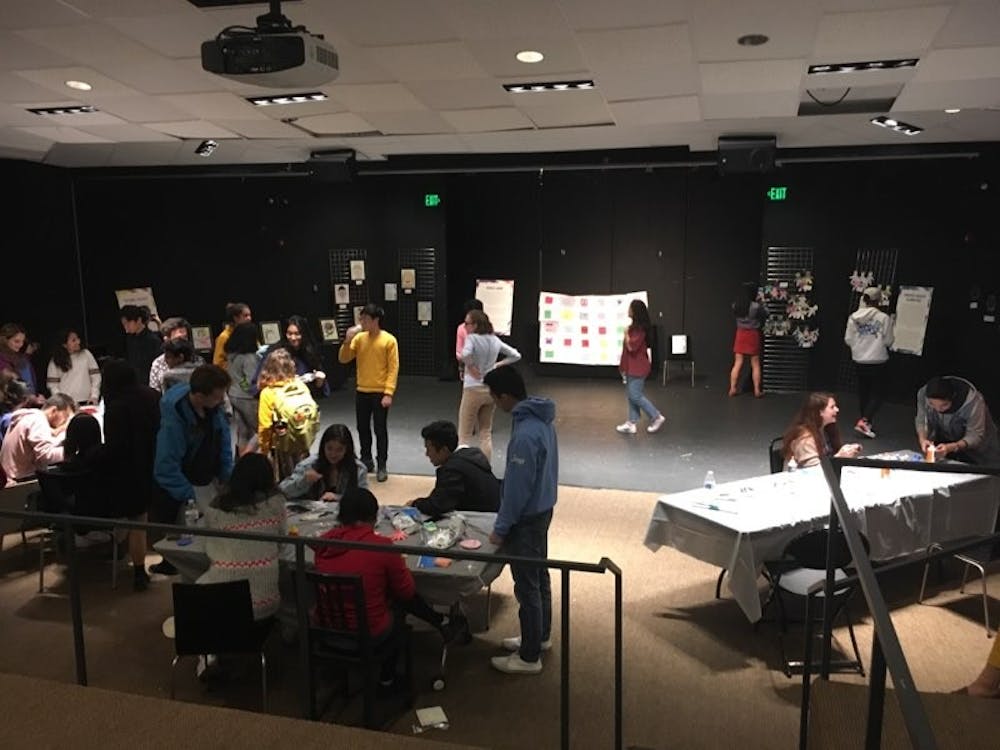The student organization Discourse held the first event in their series, Growing Up In Baltimore, on Friday, Nov. 9. The event, titled Childhood, featured artwork from children across the city and aimed to spark dialogue about how a child’s environment can shape their development.
Junior Caroline West, an executive director of Discourse, believes that the theme of Growing Up In Baltimore could help connect Hopkins and the surrounding community,
“The reason why we picked this theme is because it’s a really good jumping off point for dialogue between members of our Hopkins community and residents of Baltimore,” she said. “Growing up is a common experience, but we think that it manifests in such unique and different ways, so it’s a way for us to celebrate those differences and similarities.”
Sophomore Claire Zou, the project leader for the event, explained that she was interested in exploring different stages of life through the series. She said that she worked with various community groups, including Tutorial Project, an after school tutoring program at Hopkins; Peace Camp, a summer camp focused on peaceful communication; and her older sister’s third-grade class to create the artwork displayed at the event.
“When working with the kids, it was really nice to see how creative they would be and how they interpreted our prompts differently; some of them took it very seriously and some were very silly with it. We could see exactly what was going through their minds when we asked about their families, their homes, their aspirations,” she said.
In one display depicting how they wanted the world to be, multiple children wrote that they wanted the killing to stop and the kidnappings in Baltimore to cease.
Tracy Grant, a community member and parent of a child in Tutorial Project, attended the event on Friday.
“One part was very moving: the bubble shapes where you had the write-ups of what they wanted, and I thought it to be very truthful when it basically wanted to stop the killing in the city. That’s what’s going on in our city today and you can see how it impacts the youth and seeing that their cry is for it to stop,“ she said. “So, where you wouldn’t want your child to be exposed to any sort of crime and even if they’re not directly impacted, they’re still impacted.”
She was also interested in the ways that children thought about family structures, which she thought was evident in their family portraits.
“Most of the work coming from kids was very thought-provoking because you get to see what they see through their eyes and it expressed what the different family cutouts they had, their vision of how they depict their family even if it may not mirror what their household looks like,“ she said.
Shani Mott, an instructor in Africana Studies at Hopkins, praised the event’s intent while advising the organizers and Hopkins students to be conscious of the University’s presence in the city,
“When you speak of Hopkins as an ivory tower you’re talking of years and years of structural position that can’t be undone by virtue of wonderful program,“ she said. “If I had to think of the relationship between the two, I don’t think that Tutorial Project and events like this can’t undo the ivory tower aspect of the University, but it does speak to the kinds of work the University should do in order to help communities.”
Mott added that she hopes Hopkins will eventually become more of a part of Baltimore.
“Hopkins needs to see itself as part of the community and if you see yourself as part of the Baltimore community then you have an obligation to do right by that community,” she said.
Alongside the artwork, there were several stations that were interactive and allowed attendees to create their own art. The children that attended were able to mold shapes with play-doh, color pictures and paint.
Associate Professor of History Nathan Connolly also attended and said that he appreciated how the event actively included children.
“It was a good installation; it was good to see children’s art because it tends to be less encumbered by people trying to seem high-minded or smart, so it’s more honest artwork,“ he said. “I appreciated the fact that they have stations here so that kids can participate in the conversation with their own art.”





